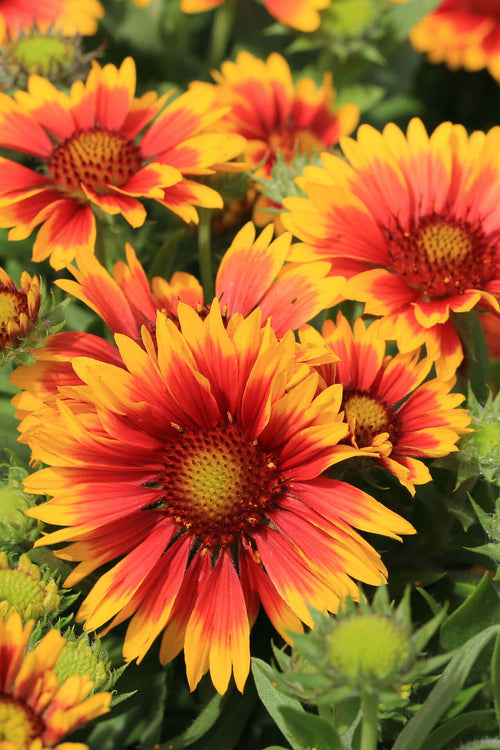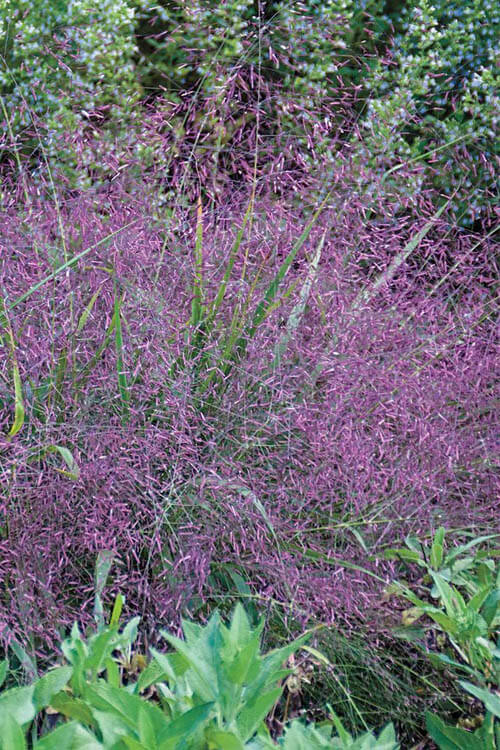Transforming Flower Gardens with Yarrow, Coneflowers, Goldenrod, Carex, Black-Eyed Susans, Blanket Flowers, and Daffodils
Meadowscaping is a gardening trend that has revolutionized how we approach flower gardens. Gone are the days of meticulously manicured lawns and neatly trimmed flower beds. Instead, Meadowscaping encourages the creation of wild and naturalistic garden spaces that mimic the beauty and diversity of natural meadows. This article explores the transformative impact of Meadowscaping and the essential plants that make it all possible - yarrow, purple and yellow coneflowers, goldenrod, carex, black-eyed Susans, blanket flowers, and daffodils.
The Meadowscaping Revolution
Meadowscaping represents a shift from traditional gardening practices, prioritizing sustainability, biodiversity, and ecological harmony. It embraces the idea that gardens can be aesthetically pleasing and environmentally beneficial. By incorporating native and pollinator-friendly plants, Meadowscaping creates stunning visual displays, supports local wildlife, and improves soil health.
Yarrow (Achillea millefolium)
Yarrow, with its feathery foliage and delicate, flat-topped clusters of flowers, is a Meadowscaping staple. Once established, this hardy perennial thrives in various soil types and is drought-tolerant. Yarrow attracts many pollinators, making it a vital addition to any Meadowscape. Its vibrant colors range from white to pink to yellow, adding a dynamic element to the garden.
Purple and Yellow Coneflowers (Echinacea purpurea and Echinacea paradoxa)
Coneflowers, available in various colors, are indispensable in Meadowscape design. Purple coneflowers (Echinacea purpurea) and yellow coneflowers (Echinacea paradoxa) are popular choices. These native perennials provide nectar-rich flowers that attract bees, butterflies, and other pollinators. Their daisy-like blooms add a cheerful and vibrant character to Meadowscapes while contributing to biodiversity.
Goldenrod (Solidago spp.)
Goldenrod, often unjustly blamed for causing hay fever (caused by ragweed), is a dazzling addition to Meadowscapes. Its golden plumes of tiny flowers create a stunning contrast with the surrounding greenery. Goldenrod provides essential late-season nectar for bees and butterflies when many other flowers have faded. Its resilience and adaptability make it a robust contender in Meadowscaping.
Carex (Sedges)
Sedges, a diverse group of grass-like plants, are essential for creating a meadow-like atmosphere in Meadowscaping. Their fine-textured foliage adds a soft and graceful touch to the garden. Carex species, such as Carex pensylvanica (Pennsylvania sedge) and Carex flacca (Blue sedge), are trendy. They provide ground cover, help control erosion, and provide habitat for small insects and animals.
Black-Eyed Susans (Rudbeckia hirta)
Black-Eyed Susans are iconic Meadowscape plants known for their vibrant yellow petals and contrasting dark centers. These cheerful perennials bloom from mid-summer to fall, making them a valuable food source for late-season pollinators. They require minimal maintenance and self-seed readily, ensuring a reliable presence in Meadowscapes year after year.
Blanket Flowers (Gaillardia spp.)
Blanket flowers, with red and yellow or orange blooms resembling Native American blankets, will catch the eye in any Meadowscape. These drought-tolerant perennials thrive in hot, sunny conditions, making them ideal for meadow-like settings. They attract butterflies and pollinators, adding dynamic movement and color to the garden.
Daffodils (Narcissus spp.)
While not native wildflowers, daffodils can uniquely contribute to Meadowscape design. Their early spring blooms announce the arrival of spring and provide a splash of color before many native perennials awaken. Daffodils are also deer-resistant, a valuable trait in areas with browsing wildlife. Strategically incorporating them can extend the beauty of Meadowscapes throughout the seasons.
The Transformation of Flower Gardens
Meadowscaping has forever changed the way we approach flower gardening. Traditional gardens with manicured lawns and meticulously pruned flower beds are giving way to more sustainable and ecologically friendly landscapes. The shift towards Meadowscaping is not just a matter of aesthetics; it's an ecological imperative. As we confront the challenges of climate change and habitat loss, the importance of creating spaces that support biodiversity and pollinators cannot be overstated. Meadowscaping doesn't just benefit wildlife and the environment; it also offers gardeners a more relaxed and low-maintenance approach to gardening. By selecting native and adaptive plants well-suited to their specific environment, gardeners can reduce the need for chemical inputs, water, and labor-intensive maintenance.
Meadowscaping has ushered in a new era of flower gardening that blends beauty, sustainability, and ecological responsibility. Yarrow, coneflowers, goldenrod, carex, black-eyed Susans, blanket flowers, and daffodils are vital players in this transformative approach. By embracing Meadowscaping, we can create gardens that dazzle the eye and nurture the planet and its inhabitants, ensuring that flower gardens will never be the same again.



















































